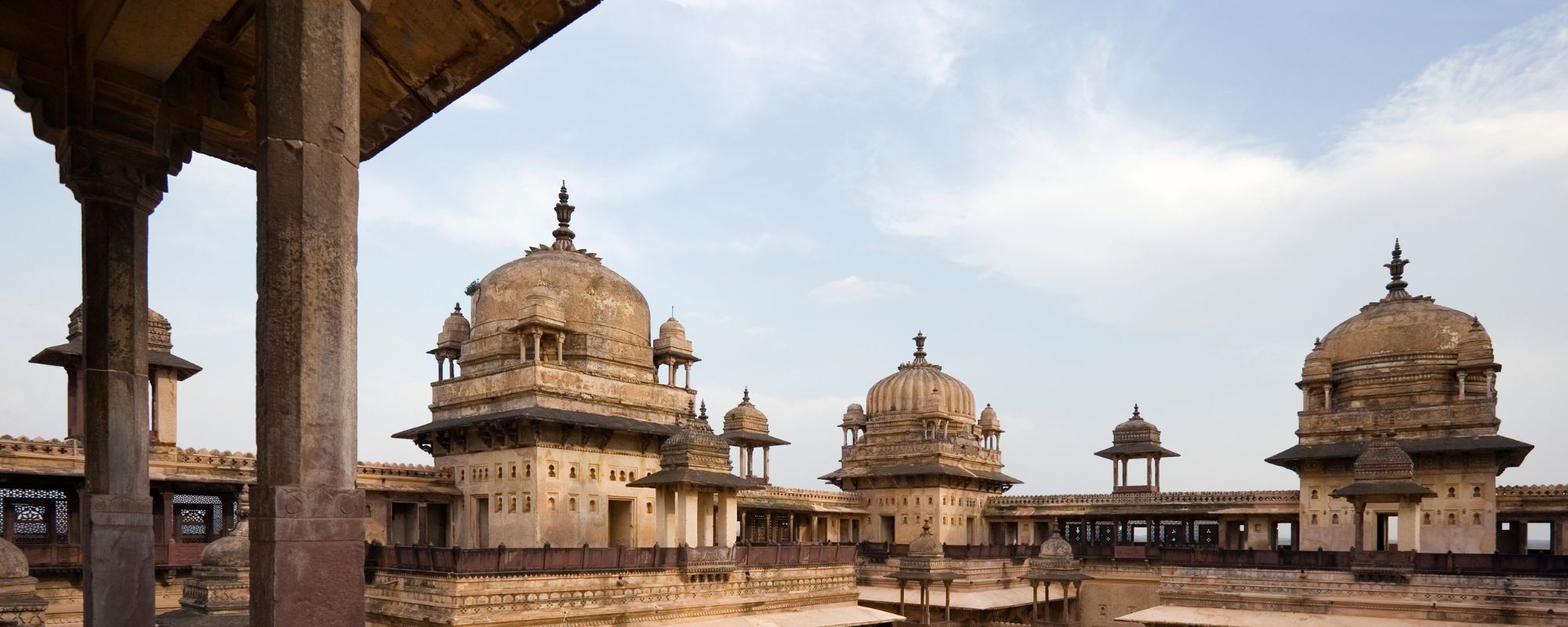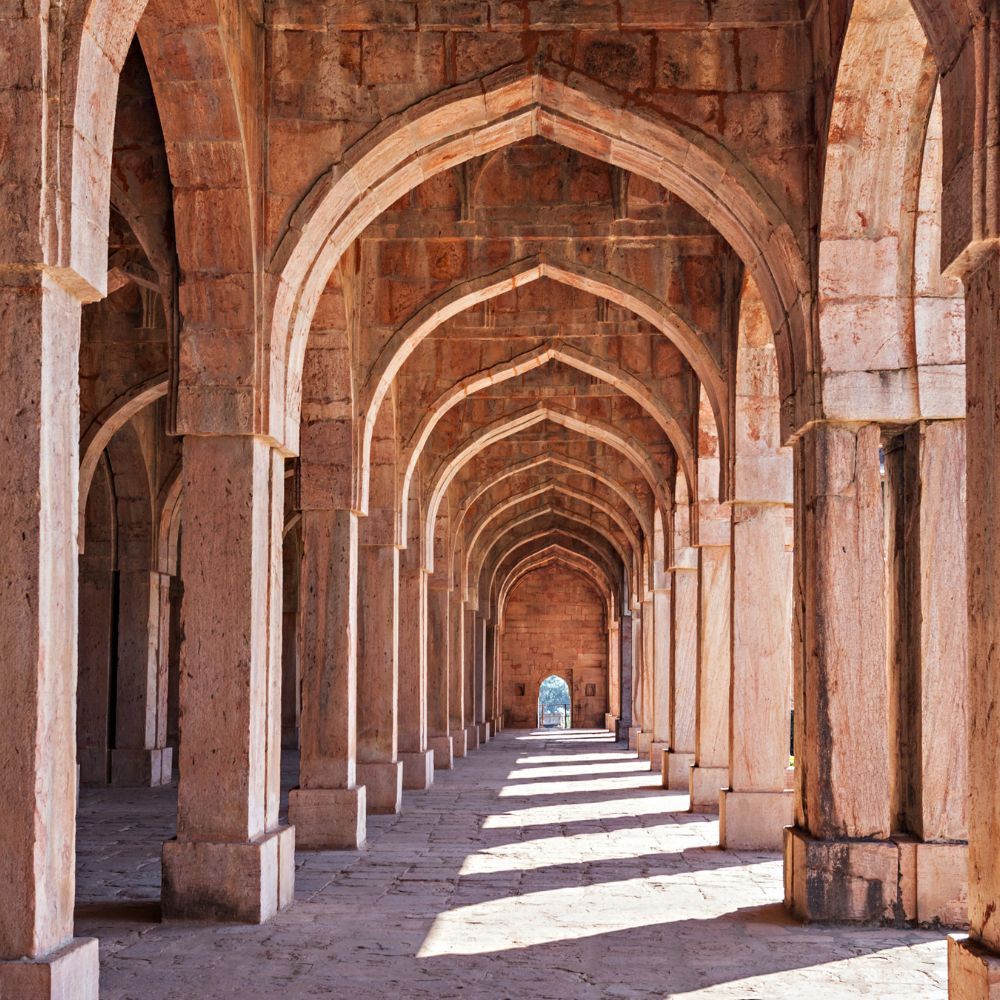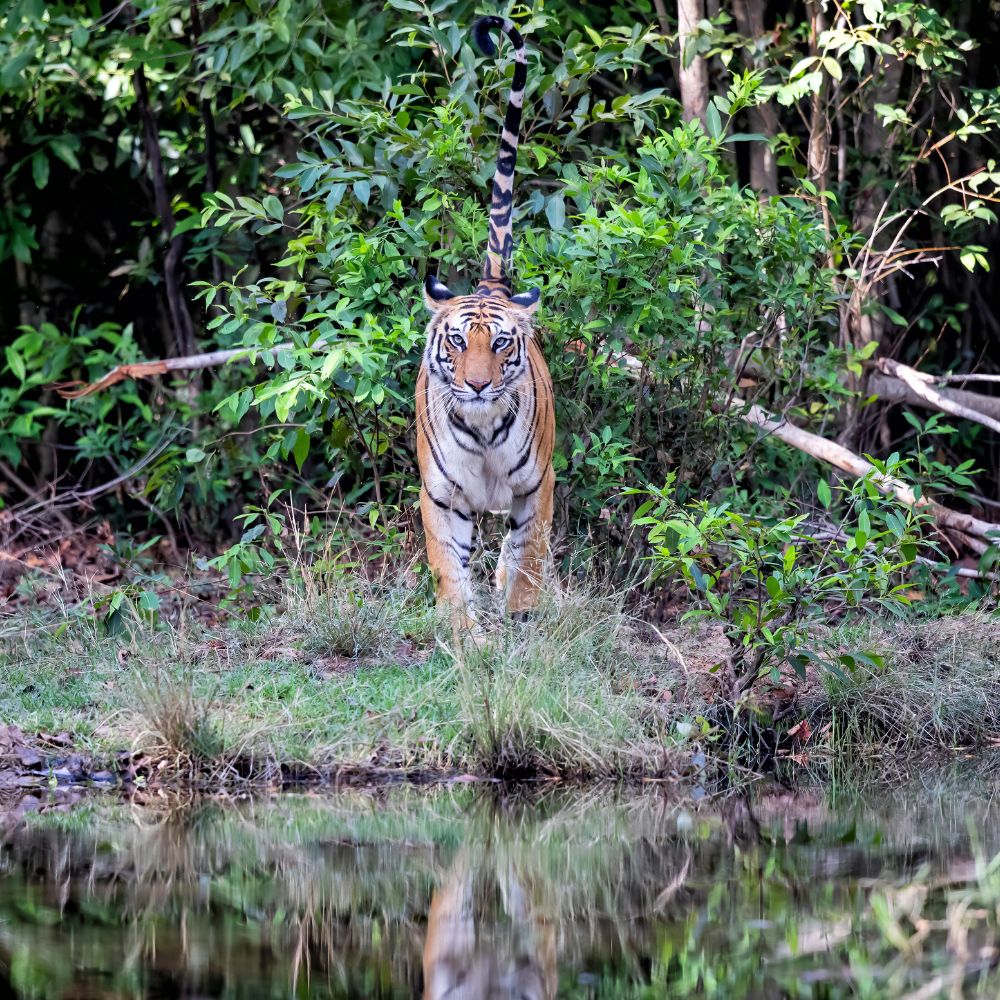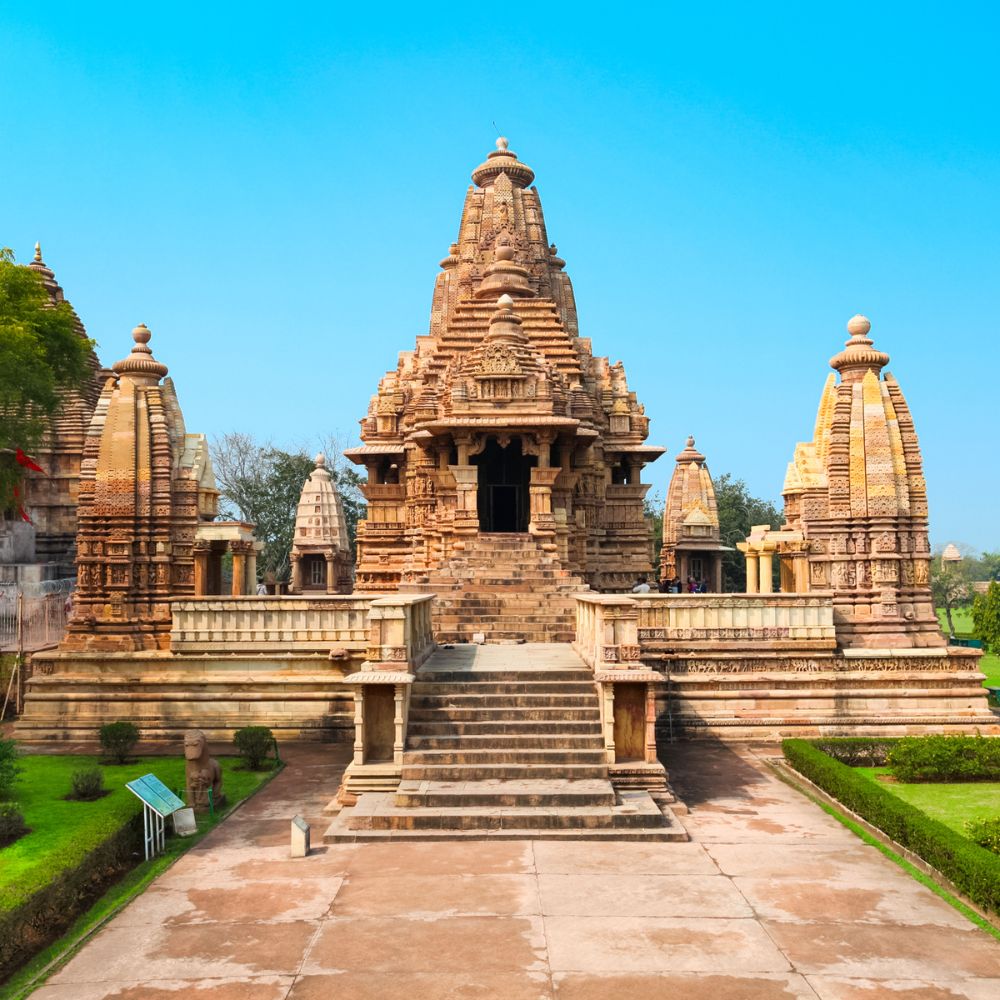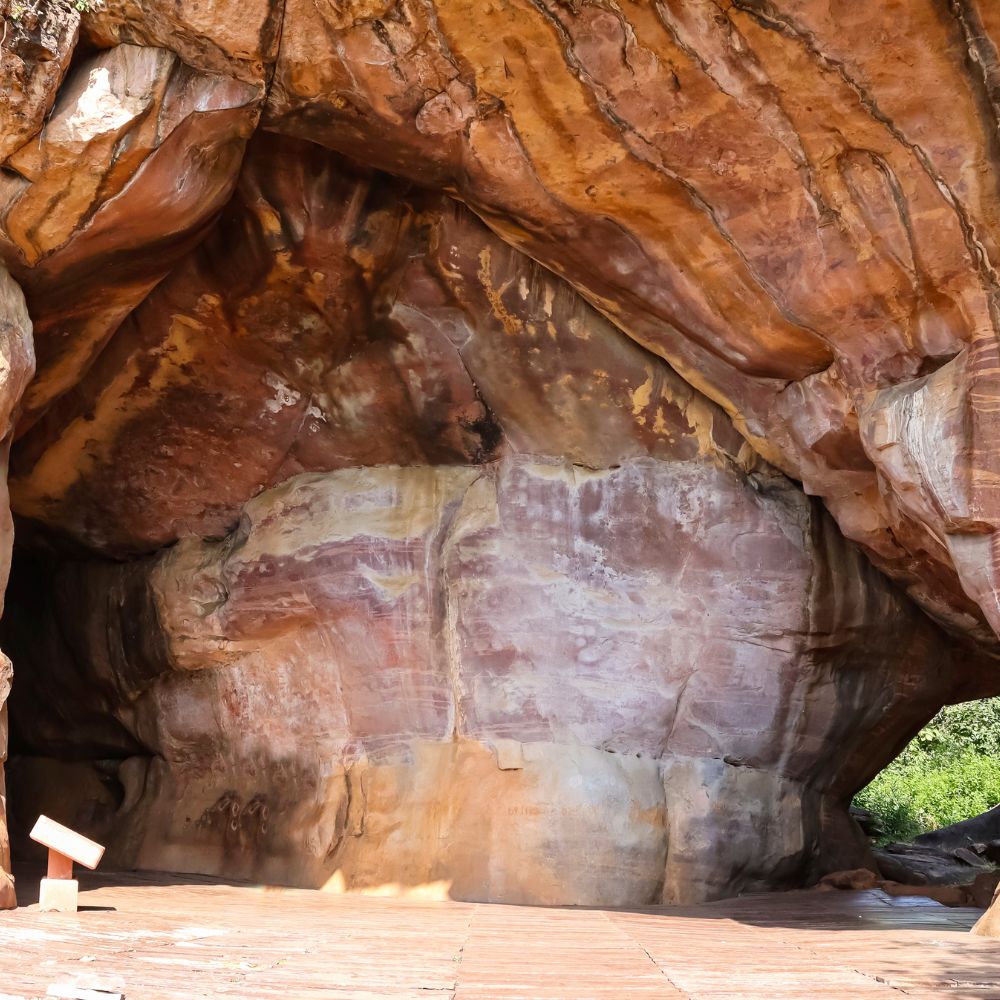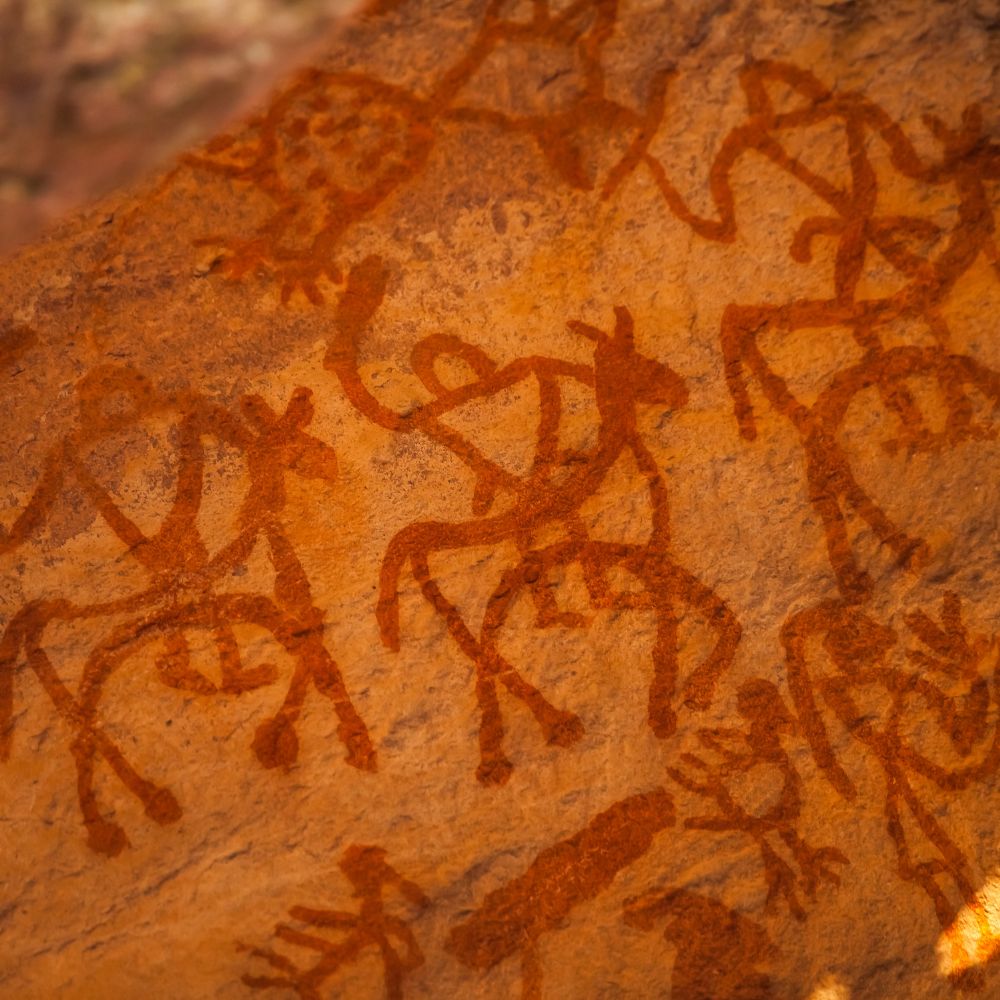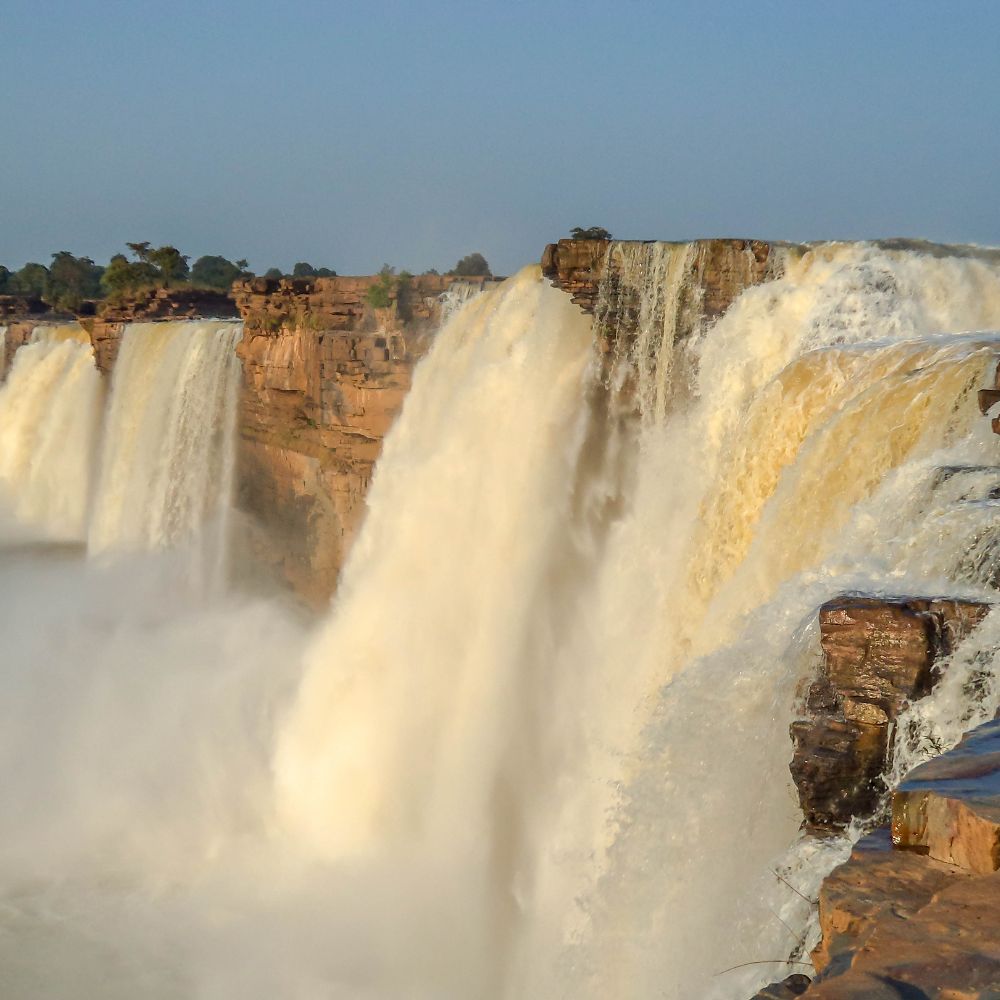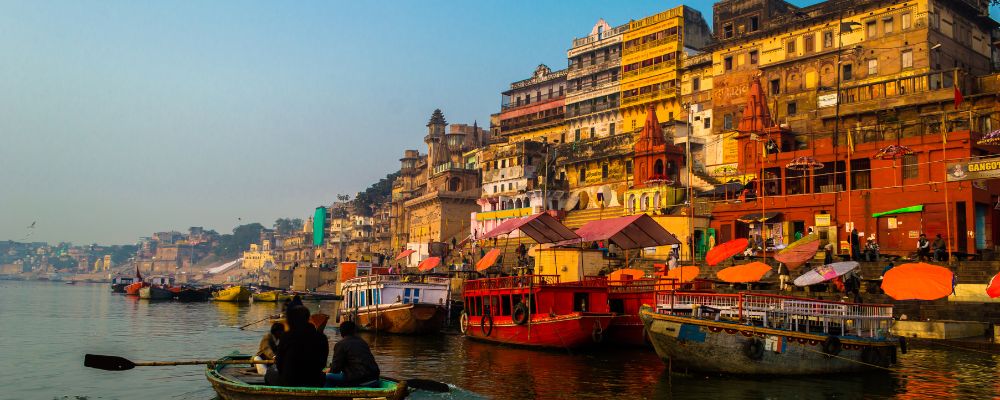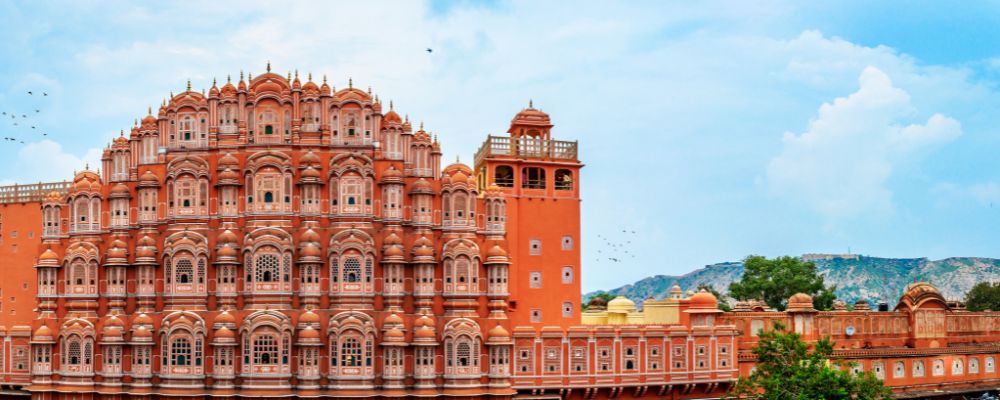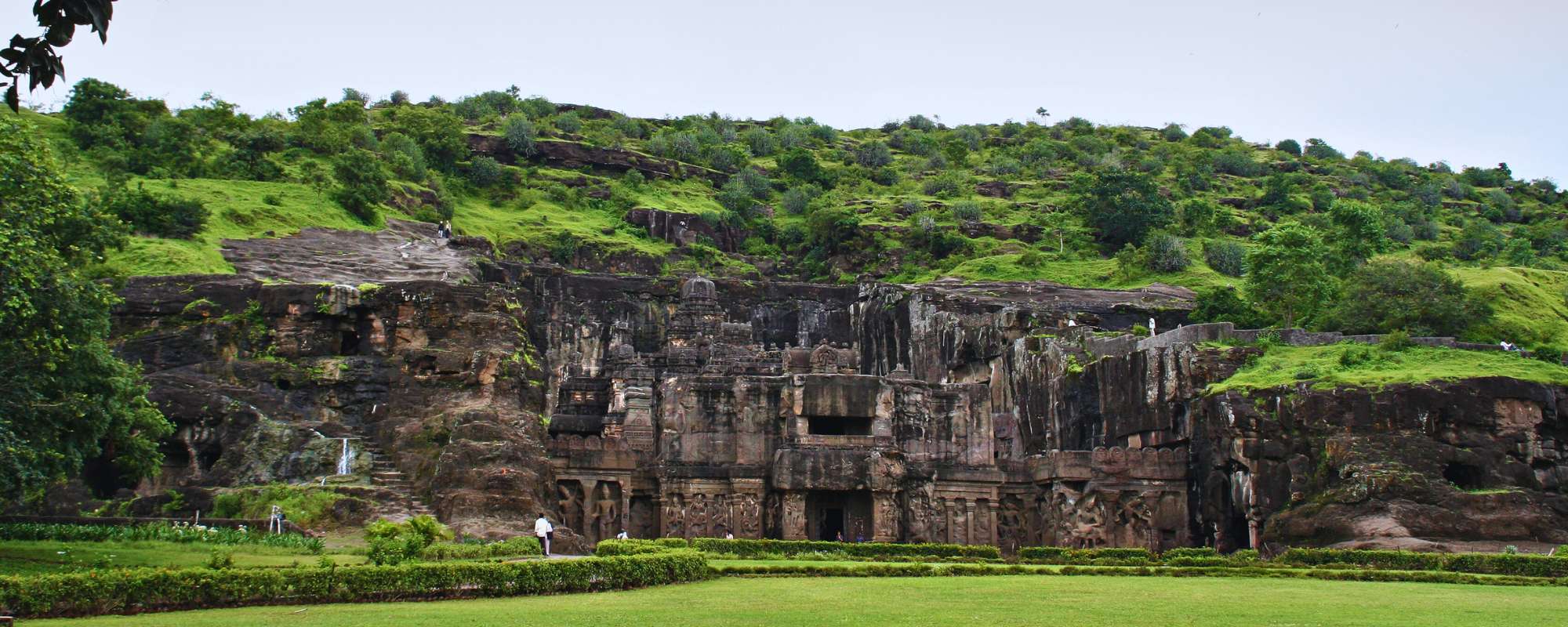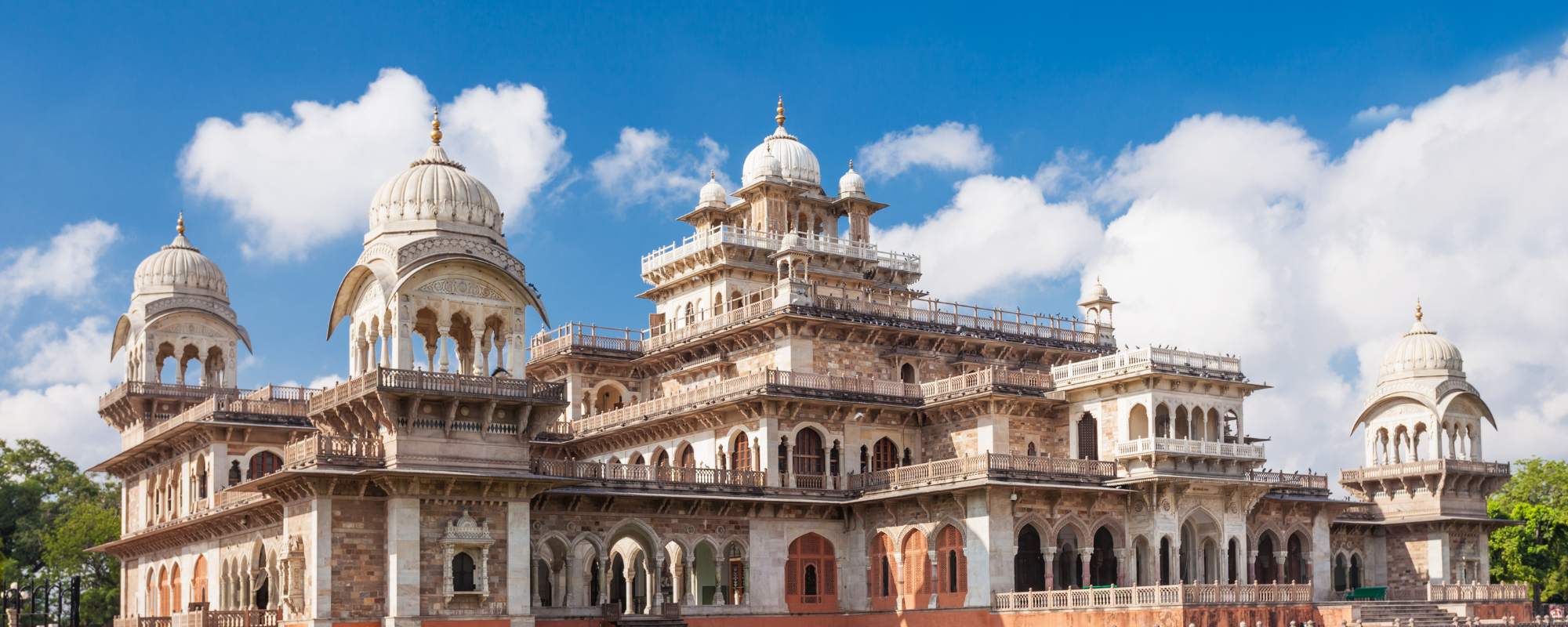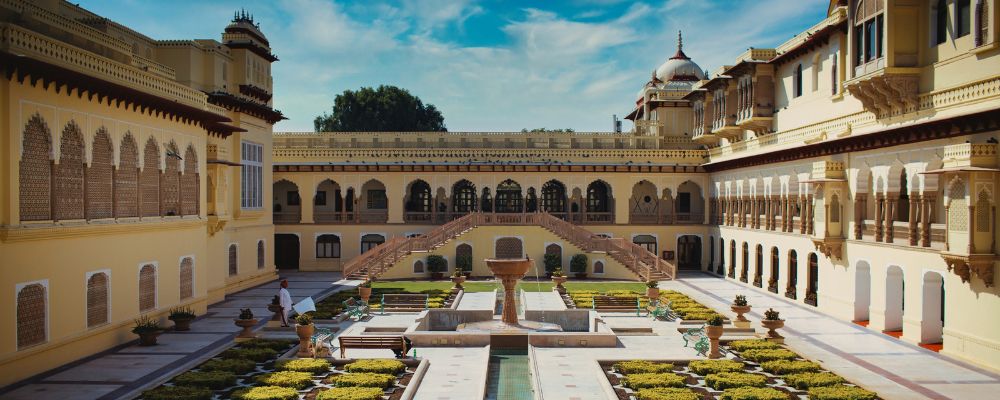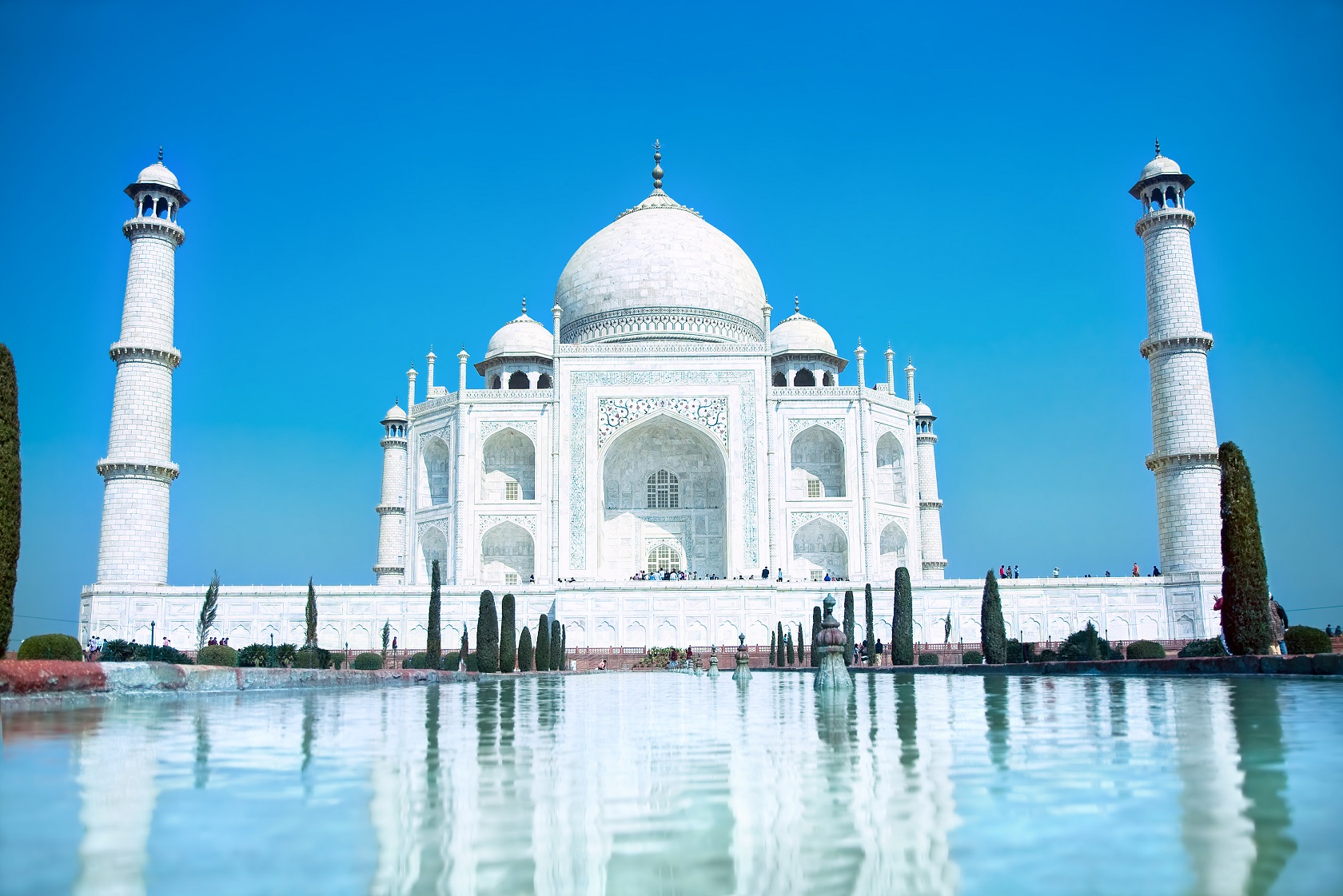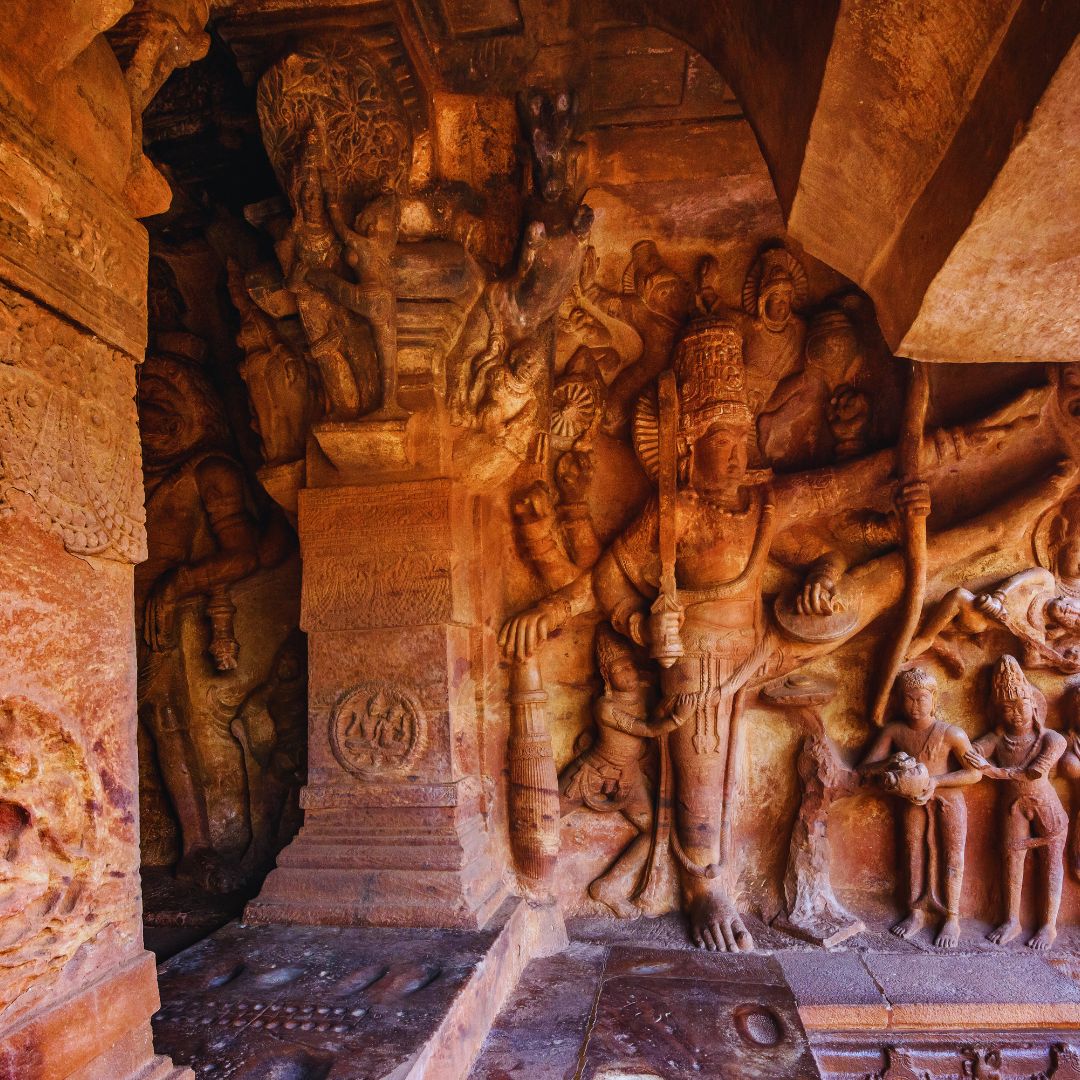The wide and varied region of Central India is home to a diversity of experiences just waiting to be explored. Nestled in the geographic heart of the Indian subcontinent, this enchanting area is a mosaic of natural splendour, cultural richness, and historical grandeur. The essence of Central India is a blend of ancient temples and magnificent forts, where dense forests and vibrant wildlife coexist with some of the country's oldest and most dynamic cities.
Central India is a treasure trove of both natural wonders and cultural gems, seamlessly blending modern advancements with ancient traditions. Whether you're a nature enthusiast, a history aficionado, or an adventure seeker, this region offers an abundance of attractions to captivate your interest. Travelling through Central India, often along the scenic routes of the Narmada River, reveals an array of historical monuments, diverse national parks, and a glimpse into rural lifestyles.
Join us as we uncover the mesmerizing destinations of Central India and explore the myriad treasures they hold. Here are top must-visit places while travelling through this fascinating region.
Khajuraho:
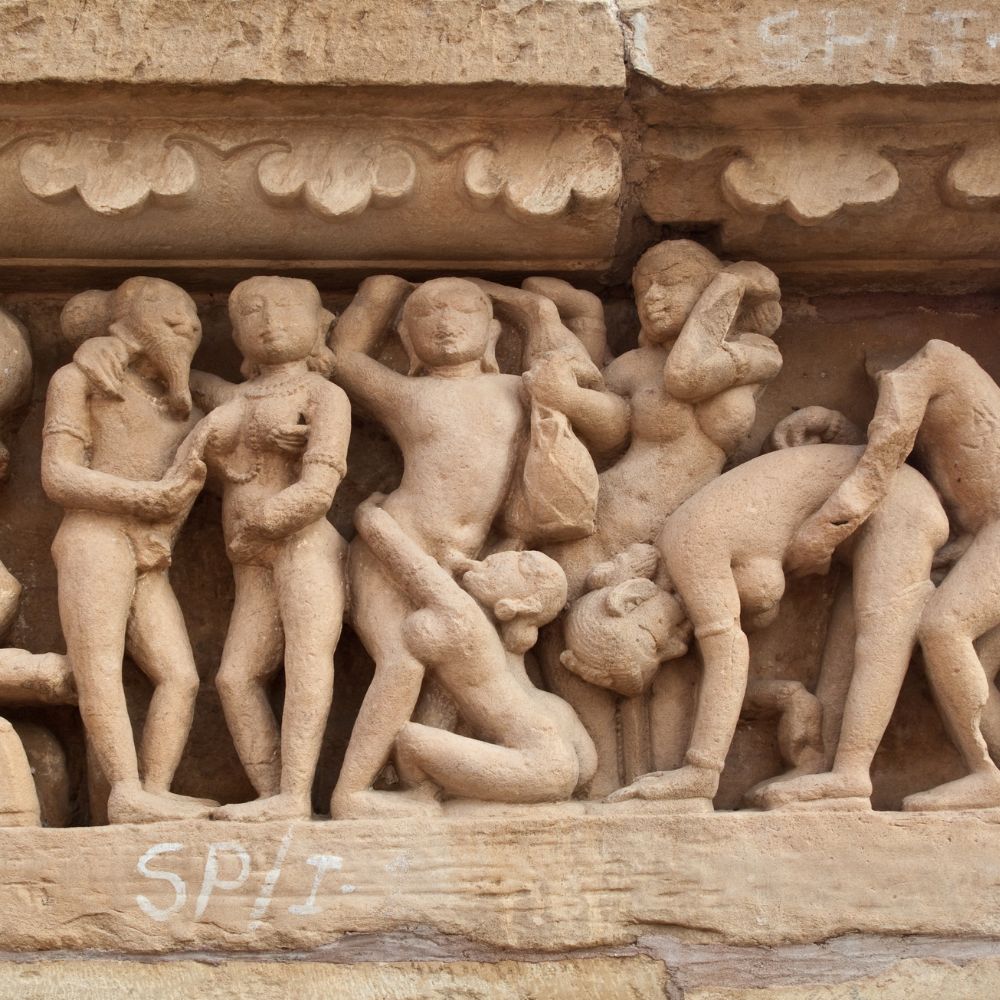
Architectural Marvels
India's Madhya Pradesh state houses the quaint town of Khajuraho in the Chhatarpur district. This town is globally recognized for its stunning collection of temples, collectively known as the Khajuraho Group of Monuments. These temples are celebrated for their intricate and exquisite sculptures and have earned the prestigious status of a UNESCO World Heritage Site.
The Exquisite Temples
The Hindu and Jain temples that form the Khajuraho Group of Monuments were built between the ninth and eleventh centuries under the patronage of the Chandela dynasty. Historical records indicate that by the 12th century, there were 85 temples spread across 20 square kilometres. Today, approximately 25 of these temples remain, dispersed over an area of six kilometres. Among the surviving structures, the Kandariya Mahadeva Temple stands out, adorned with a plethora of sculptures that highlight the fine intricacies, symbolism, and expressiveness of traditional Indian art.
Intricate Carvings and Sculptures
These temples are renowned for their detailed architectural elements, beautiful sculptures, and intricate carvings. They adhere to the North Indian architectural style known as 'Nagara'. Both the interiors and exteriors of these temples feature elaborate carvings depicting themes from Hindu mythology, daily life, and sensual symbolism. The use of erotic sculptures sets Khajuraho apart from other Indian temple structures. These representations of lovemaking are believed to symbolize various aspects of life, such as spiritual awakening and the appreciation of human emotions, showcasing superb craftsmanship and artistic talent.
Jain Temples
In addition to the Hindu temples, Khajuraho also boasts a collection of Jain temples. These temples are noted for their serene and subtle beauty, featuring delicate carvings of Jain Tirthankaras. The Jain temples add a layer of cultural diversity to the architectural landscape of Khajuraho.
Dance Festival Extravaganza
Every year, Khajuraho hosts a cultural festival that includes classical Indian dance performances set against the backdrop of the ancient temples. This festival, typically held in February, celebrates India's rich dance heritage and brings the historical site to life with vibrant performances, adding a contemporary cultural layer to Khajuraho's timeless historical significance.
Kanha National Park:

Biodiversity Hotspot
Kanha National Park, the largest national park in Central India and one of the most magnificent parks in Asia is nestled in the Maikal hills of the Satpura range within the central Madhya Pradesh area. Spanning 940 square kilometres, Kanha is renowned for its rich biodiversity and is one of India's premier tiger reserves.
Majestic Tigers
The Royal Bengal tiger is undoubtedly the star attraction among the 22 species of large mammals inhabiting Kanha. The park, which has been a crucial part of Project Tiger since 1974, has played a significant role in increasing the tiger population. The opportunity to witness these majestic creatures in their natural habitat is a thrilling experience for visitors.
Jungle Safaris
Kanha National Park is world-renowned for its animal safaris, attracting wildlife enthusiasts from across the globe. The park is divided into two main sanctuaries: Hallon and Banjar, with three main entry gates—Sarhi, Mukki, and Khatia (Kisli). Sarhi and Khatia gates are accessible from Jabalpur, while Mukki gate can be easily reached from Nagpur or Raipur. These safaris offer an immersive experience of the park's diverse ecosystems, from dense Sal forests to open grassy meadows.
Sanchi:
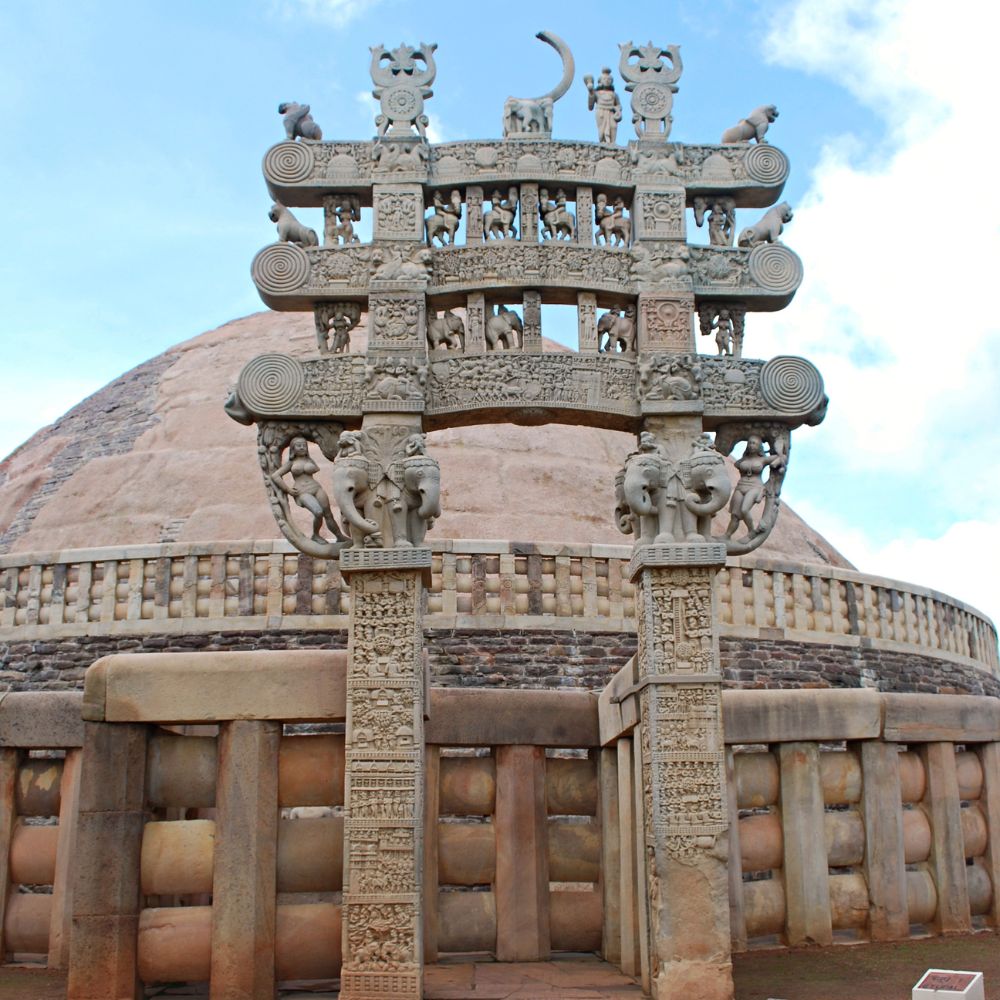
Historical Significance
The Buddhist monument of Sanchi, located in Madhya Pradesh, is one of India's oldest stone structures. The Great Stupa, constructed by Emperor Ashoka of the Mauryan Dynasty, is a UNESCO World Heritage Site and a testament to the evolution of Buddhist art and architecture in Madhya Pradesh. Situated 46 kilometres from the city of Bhopal, Sanchi's monumental stupa is a significant relic of ancient Buddhist heritage.
The Great Stupa
The massive hemispherical dome of the Great Stupa stands over 50 feet tall with a circumference exceeding 30 meters. Built to honour Lord Buddha, it houses several important Buddhist artefacts. This grand structure symbolizes the spiritual and artistic heights achieved during Ashoka's reign.
The Ashoka Pillar
A notable feature at Sanchi is a fragment of the renowned Ashoka Pillar, erected in the third century BC next to the stupa. This pillar, with its exquisite carvings and polished finish, is a significant archaeological artefact. The pillar's crown, featuring four lions seated back to back, is now housed in the Sanchi Museum and is a major attraction.
Iconic Landmarks
Sanchi is renowned for its Ashoka Pillar, toranas, and elegantly carved gates, which date back to the third century BC. These remnants of ancient Buddhist civilization make Sanchi a significant heritage tourist destination. Visitors from around the world come to cherish this sacred Buddhist pilgrimage site, which stands as a monument to India's rich historical and spiritual legacy.
Bhimbetka Rock Shelters:

Prehistoric Significance and Archaeological Importance
Nestled in the rocky terrain of the Vindhya Range, the Bhimbetka Rock Shelters offer a captivating glimpse into prehistoric human life. These shelters, dating back to the Paleolithic and Mesolithic periods, serve as an invaluable record of early human settlement and cultural evolution. Discovered by V.S. Wakankar in 1957, Bhimbetka stands as a testament to human ingenuity and adaptability in ancient times.
Cave Paintings: A Glimpse into Ancient Life
The rock shelters are adorned with a rich tapestry of cave paintings that chronicle the daily lives, hunting practices, and rituals of early humans. These vivid depictions, rendered in red and white hues using natural pigments, showcase scenes of communal dances, animal chases, and religious ceremonies. The artistry displayed here is a remarkable reflection of the cognitive and creative abilities of our ancestors.
UNESCO World Heritage Status
In recognition of its historical and cultural significance, the Bhimbetka Rock Shelters were designated a UNESCO World Heritage Site in 2003. This accolade underscores the global importance of Bhimbetka as a cradle of human civilization and a repository of prehistoric art. Visitors to this site can immerse themselves in the profound narrative of humanity's early artistic and cultural expressions.
Jagdalpur:
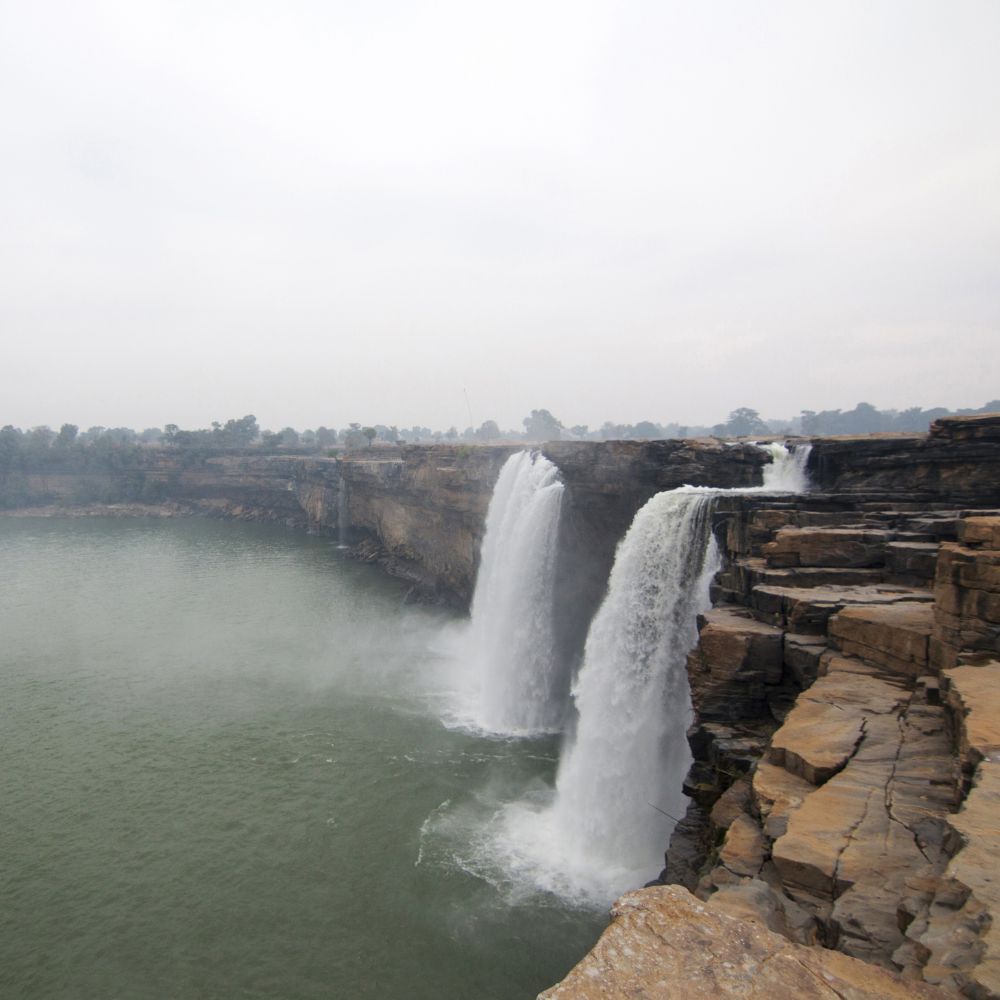
Chitrakote Falls: The Niagara of India
Jagdalpur, the cultural capital of Chhattisgarh, is home to the magnificent Chitrakote Falls, often hailed as the 'Niagara of India.' This spectacular waterfall, cascading from a height of 95 feet, is a mesmerizing sight during the monsoon season when the Indravati River is in full spate. The thunderous roar and misty spray of the falls create a breathtaking natural spectacle that draws tourists from across the globe.
Tirathgarh Falls and Kanger Valley National Park
Apart from Chitrakote, the region boasts the enchanting Tirathgarh Falls, known for its picturesque multi-tiered descent. Nearby, the Kanger Valley National Park offers a haven for wildlife enthusiasts, featuring diverse flora and fauna, lush forests, and the mystical Kotumsar and Kailash caves. This park is a sanctuary for species such as the Bastar Hill Myna and the Indian Wild Dog.
Tribal Culture and Local Traditions
Jagdalpur is also a gateway to the rich tribal heritage of Bastar. The indigenous communities here, including the Gonds and Murias, preserve ancient customs, art forms, and rituals. Visitors can experience the vibrant local culture through traditional dances, handicrafts, and festivals like Bastar Dussehra, which is celebrated with great fervour and distinct tribal customs.
Bhoramdeo Temple:

The Erotic Sculptures and Architectural Beauty
Bhoramdeo Temple, often compared to Khajuraho, is renowned for its erotic sculptures and intricate architectural design. Located in the Kabirdham district, this 11th-century temple complex showcases the remarkable artistry and craftsmanship of the Nagwanshi dynasty. The temple's walls are adorned with detailed carvings depicting various aspects of life and spirituality.
Historical and Cultural Significance
The temple complex, dedicated to Lord Shiva, includes several smaller shrines and monuments that reflect the religious and cultural significance of the region. The sculptures and carvings provide a glimpse into the societal norms, beliefs, and artistic expressions of the time, making it a significant site for both historical and cultural studies.
Comparing to Khajuraho
While Bhoramdeo Temple shares similarities with the temples of Khajuraho in terms of erotic art, it also has its unique features. The temple's rural setting, amidst lush green landscapes and the Maikal hills, adds to its charm and mystique. Visitors often find the comparison intriguing, as it highlights the widespread influence of erotic art in ancient Indian temple architecture.
Jhansi:
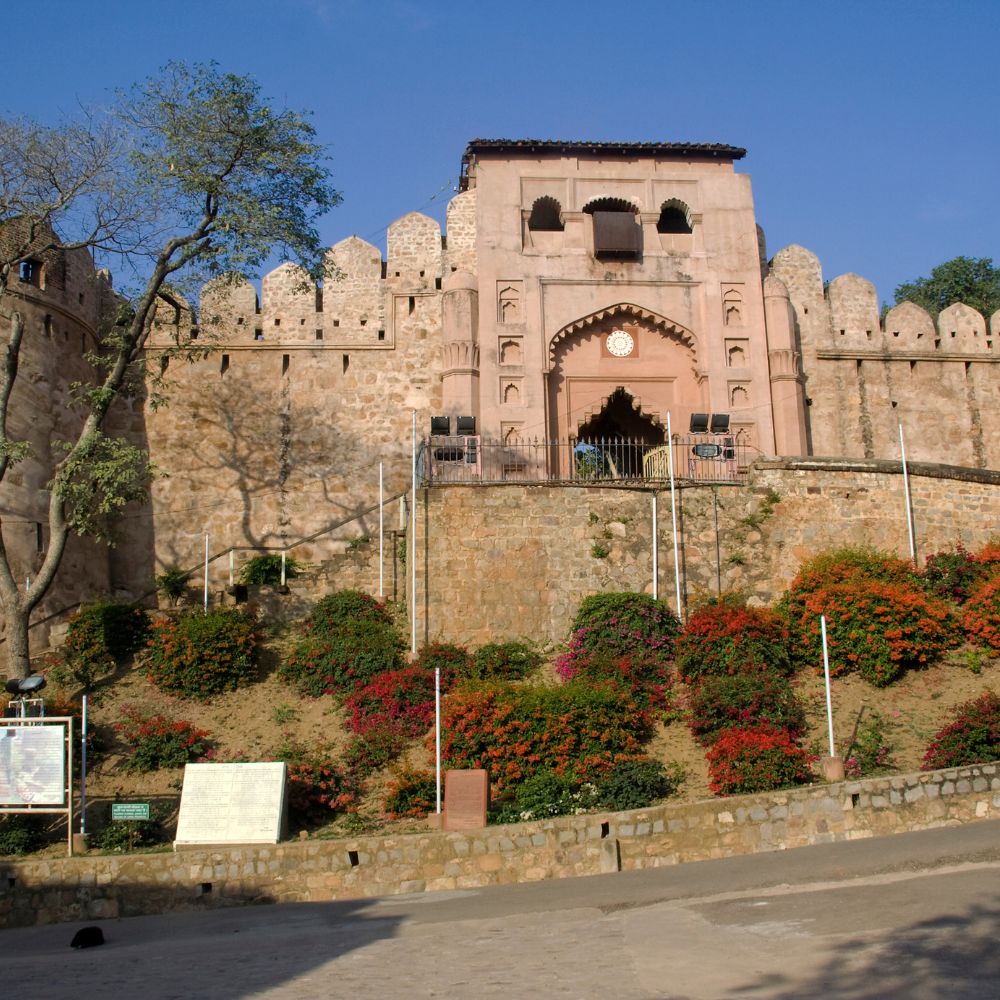
Historical Significance and the Rani of Jhansi
Jhansi, located in the Bundelkhand region, is a city steeped in history and valour. It is famously associated with Rani Lakshmi Bai, one of India's most revered freedom fighters who played a pivotal role in the Indian Rebellion of 1857. Her legacy is a source of inspiration, and Jhansi remains a symbol of courage and resistance.
Jhansi Fort and Rani Mahal
The Jhansi Fort, an imposing structure atop a hill, offers panoramic views of the city and a glimpse into its storied past. The fort, built by Raja Bir Singh Deo in the 17th century, houses several historical artefacts and exhibits related to the life of Rani Lakshmi Bai. Nearby, the Rani Mahal, her former residence, now serves as a museum showcasing artefacts from the era.
Role in the Indian Rebellion of 1857
Jhansi was a significant centre during the Indian Rebellion of 1857. Rani Lakshmi Bai's leadership and valour during the siege of Jhansi have made the city a crucial site of historical importance. Visitors can explore various landmarks that narrate the tale of her bravery and the larger struggle for India's independence.
Dhamtari:
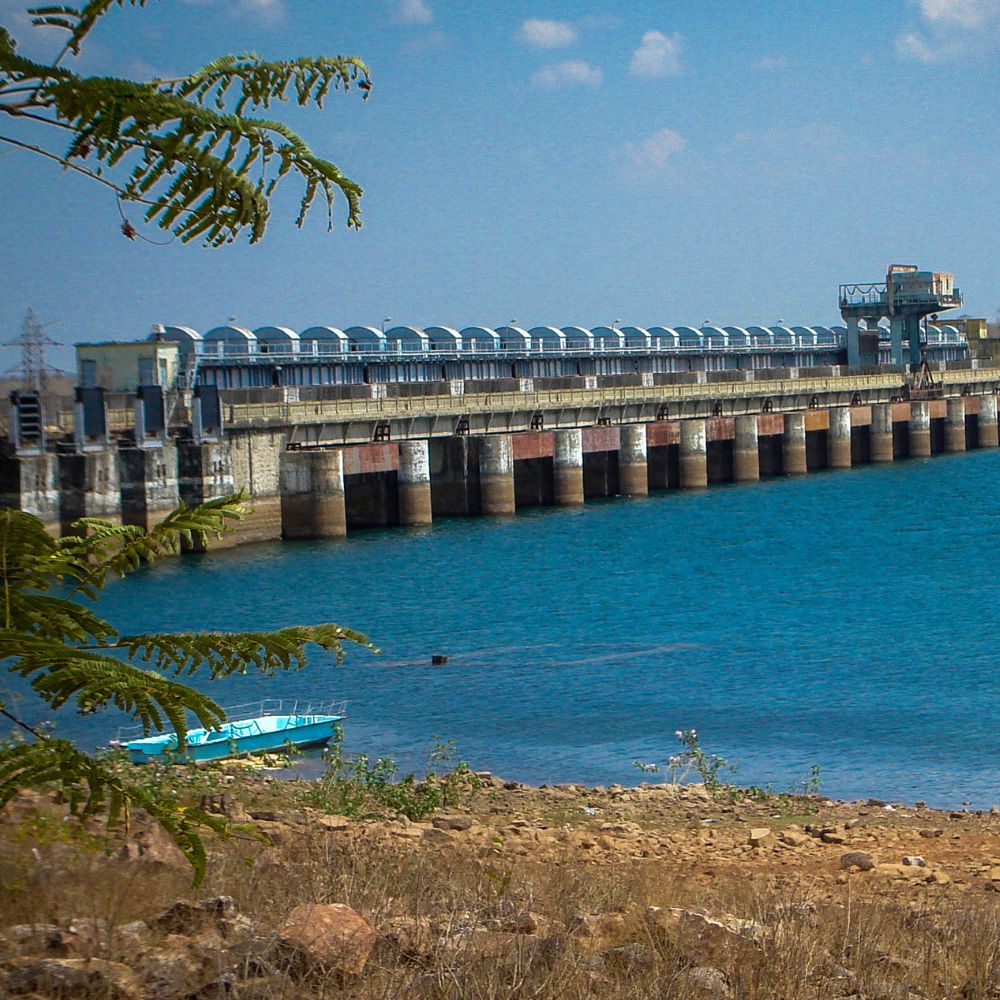
Gangrel Dam and Water Sports
Dhamtari is known for the Gangrel Dam, also called the Ravishankar Water Reservoir. This large dam on the Mahanadi River is a hub for water sports and recreational activities. Visitors can enjoy boating, jet skiing, and fishing while taking in the scenic views of the reservoir.
Sihawa Hills and Ancient Temples
The Sihawa Hills, located near Dhamtari, are home to ancient temples and scenic landscapes. The area is a pilgrimage site with temples dedicated to various deities, offering a peaceful retreat for visitors. The natural beauty of the hills complements the spiritual ambience.
Cultural Heritage and Tribal Villages
Dhamtari is surrounded by numerous tribal villages where visitors can experience the rich cultural heritage and traditions of the indigenous communities. The local crafts, dances, and festivals provide a deep insight into the tribal way of life and their close relationship with nature.
Bhedaghat:
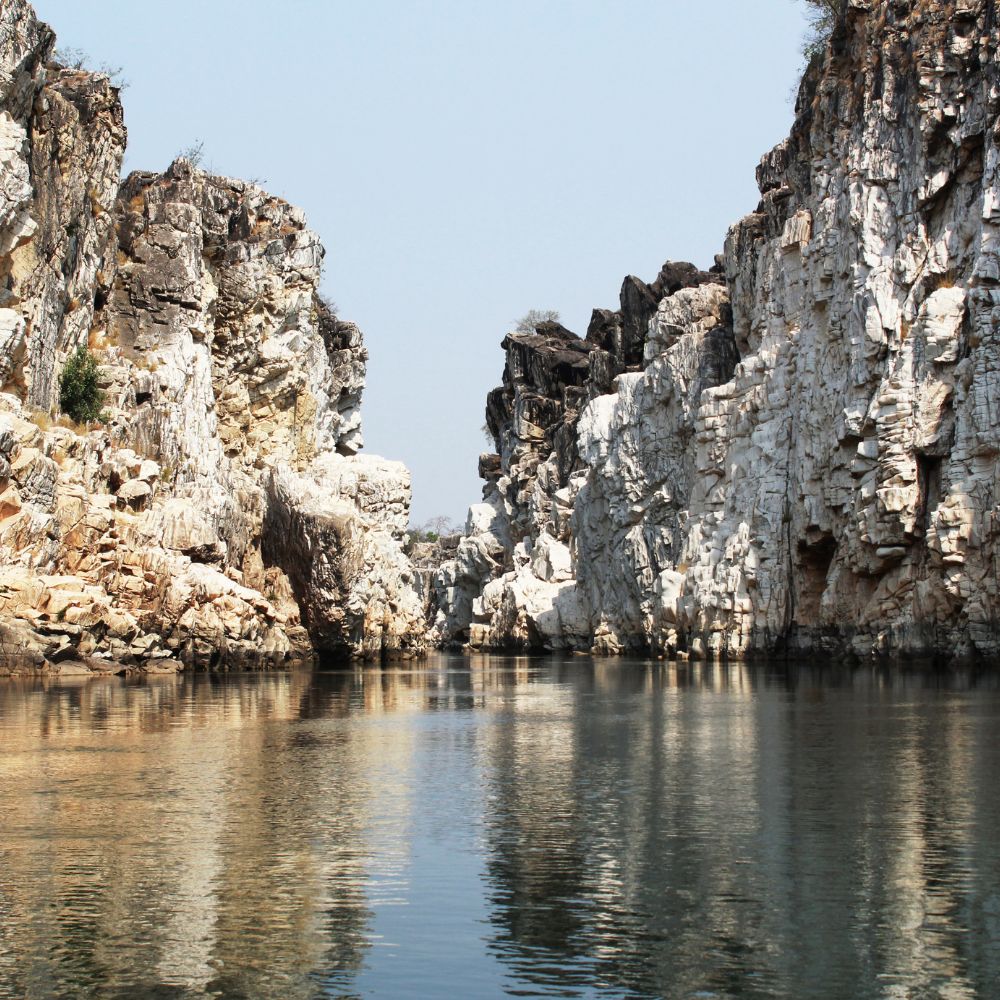
Marble Rocks and Dhuandhar Falls
Bhedaghat, near Jabalpur, is famed for its stunning marble rocks that tower over the Narmada River. The Dhuandhar Falls, where the river plunges dramatically, creating a misty spectacle, is a major attraction. The combination of the shimmering marble and the powerful falls makes for a breathtaking sight.
Boating on the Narmada River
Boating on the Narmada River is a popular activity in Bhedaghat. As you glide through the river, you can witness the magnificent marble cliffs up close. The boat rides, especially during a moonlit night, offer a surreal and memorable experience.
Cable Car Rides and Scenic Beauty
For a bird's-eye view of the Marble Canyon and Dhuandhar Falls, visitors can take a cable car ride. This aerial journey provides an unparalleled perspective of the natural beauty and geological wonders of Bhedaghat.
Mandu:
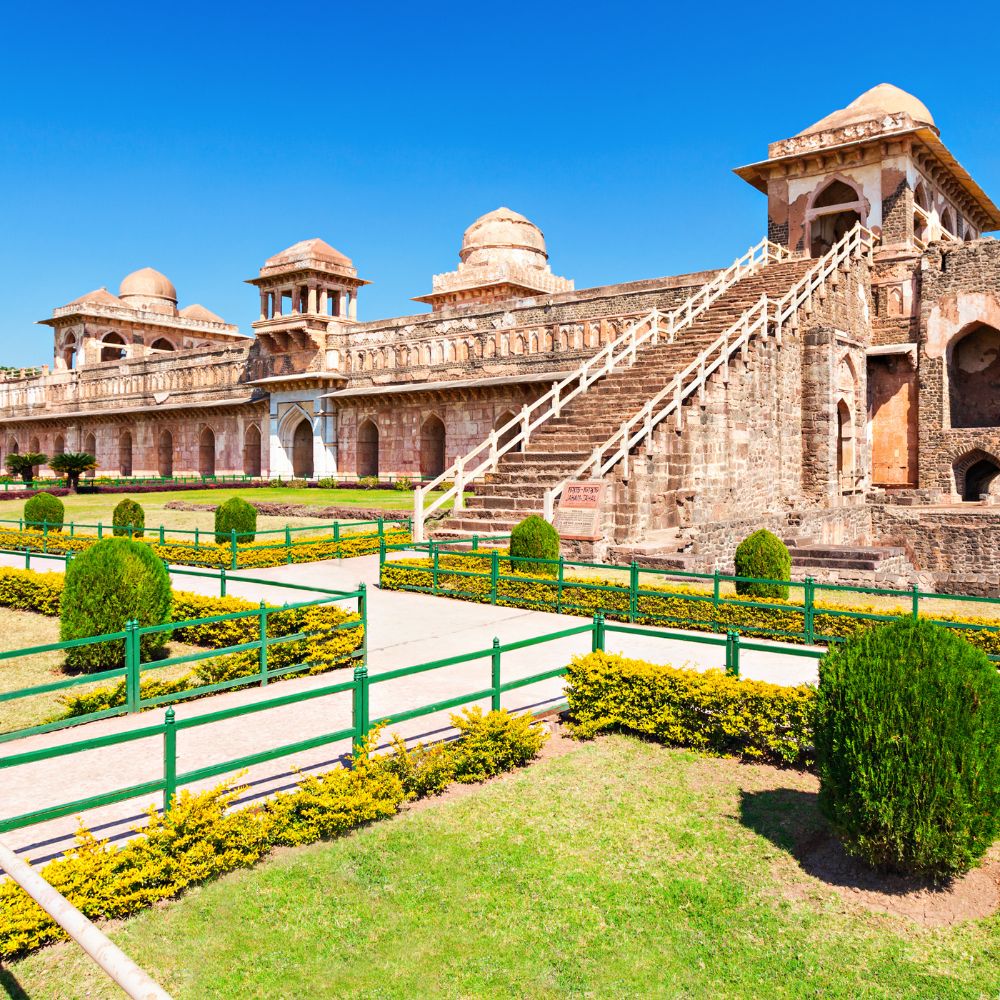
Architectural Marvels and Historical Ruins
Mandu, also known as Mandavgad, is renowned for its architectural splendour and historical ruins. The city, perched on a plateau, is dotted with palaces, forts, and gateways that reflect its rich history. Each structure narrates a story of Mandu's glorious past and its strategic importance.
Jahaz Mahal and Hindola Mahal
Among Mandu's many architectural wonders, the Jahaz Mahal (Ship Palace) and Hindola Mahal (Swing Palace) stand out. The Jahaz Mahal, situated between two lakes, resembles a ship sailing on water. The Hindola Mahal is known for its unique sloping walls that create an illusion of movement. Both palaces showcase the exquisite craftsmanship of the era.
Romantic Legends and Cultural Significance
Mandu is often associated with romantic legends, particularly the love story of Sultan Baz Bahadur and Rani Roopmati. Their tale is woven into the cultural fabric of the city, adding a layer of mystique and allure. Visitors can explore the Roopmati Pavilion and Baz Bahadur's Palace to delve deeper into this enchanting narrative.
Gwalior:
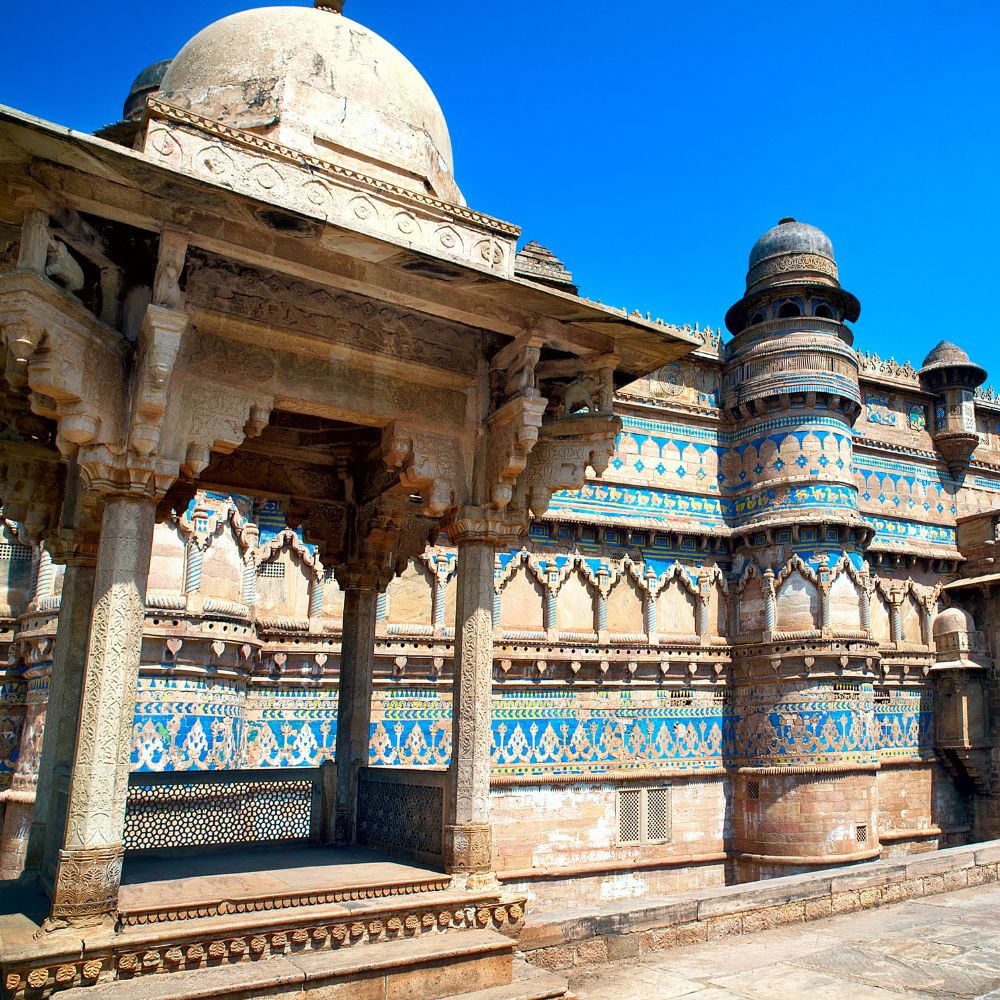
Historic Significance
Gwalior is a historic city in Madhya Pradesh, famed for its hilltop fort, palaces, and magnificent temples that bestow a majestic beauty and reveal its storied past. The city has witnessed the rule of numerous Rajputana kings who constructed forts and palaces during their reigns, contributing to Gwalior's architectural grandeur.
Rajput and Princely Heritage
Gwalior's historical appeal is enhanced by its designation as a princely city during the British Raj. Founded by King Suraj Sen, the city was also home to some of India's most distinguished aristocracy. The presence of memorials honouring freedom fighters like Tatya Tope and the resilient Rani of Jhansi adds to its rich historical tapestry.
Jal Vilas Palace
A visit to Jal Vilas Palace showcases opulence on a grand scale. The palace houses the world's largest carpet, which took approximately 12 years to weave and boasts two of the largest chandeliers in the world, each weighing close to 3.5 tonnes. This splendid residence of the Scindia family offers a glimpse into the lavish lifestyles of India's erstwhile royalty.
Tansen's Mausoleum and Music Festival
The legendary Indian musician Tansen, a prominent figure in Hindustani classical music, was born in Gwalior. His mausoleum is a significant landmark, and the city celebrates his legacy with the annual Tansen Music Festival in November or December. This four-day event attracts classical artists from across the nation, who perform near the tomb, making it a cultural highlight of Gwalior.
Architectural Wonders
Gwalior's architectural wonders include its medieval forts, palaces, and temples, each with a unique and intriguing history. These sites transport visitors back to the era of Maharajas and Maharanis, allowing them to experience the grandeur of the past. The Gwalior Fort, in particular, stands as a testament to the city's strategic and architectural significance.
Amarkantak:

Spiritual Significance
Amarkantak, located 159 kilometres from Kanha National Park, is a vital destination in Madhya Pradesh. Known as "Teerthraj" or "The King of Pilgrimages," this town's name in Sanskrit means "eternal source." Amarkantak is a revered Hindu pilgrimage site, renowned for its spiritual significance as well as its geographical and ecological diversity.
Geographical and Ecological Diversity
Perched on the hills at an elevation of 1065 meters, Amarkantak is surrounded by stunning temples and natural beauty. The town is the source of the Narmada River, one of India's holiest rivers, making it a unique and sacred location. Additionally, Amarkantak is the confluence point of the Narmada, Sone, and Johila rivers, and it marks the meeting of the Vindhya and Satpura Ranges, with the Maikal hills being particularly prominent.
Temples of Amarkantak
Amarkantak is home to some of the most exquisite temples, including the Narmada Udgam Temple, which honours the river's origin. Another significant temple is the Pataleshwar Mahadev Temple, dedicated to Lord Shiva, and believed to have been constructed during the Kalchuri Dynasty's rule. These temples are not only spiritual centres but also architectural marvels that attract visitors from far and wide.
Historical and Cultural Heritage
Amarkantak also holds historical and cultural importance. It is believed that the spiritual poet Sant Kabir meditated on the Kabir Chabutra here. The town celebrates various festivals with great enthusiasm, especially during the winter months. Shiv Chaturdashi, Makar Sankranti, and Narmada Jayanti are celebrated with fervour, attracting thousands of pilgrims and tourists.
Tourist Experience
Amarkantak offers a tranquil and spiritual retreat, making it an ideal destination for a relaxed weekend with family and friends. Visitors come to pay their respects at the historic temples, immerse themselves in the peaceful surroundings, and rejuvenate their spirits. The town's unique combination of spiritual, ecological, and historical attractions ensures an enriching and memorable experience for all who visit.
Jabalpur:
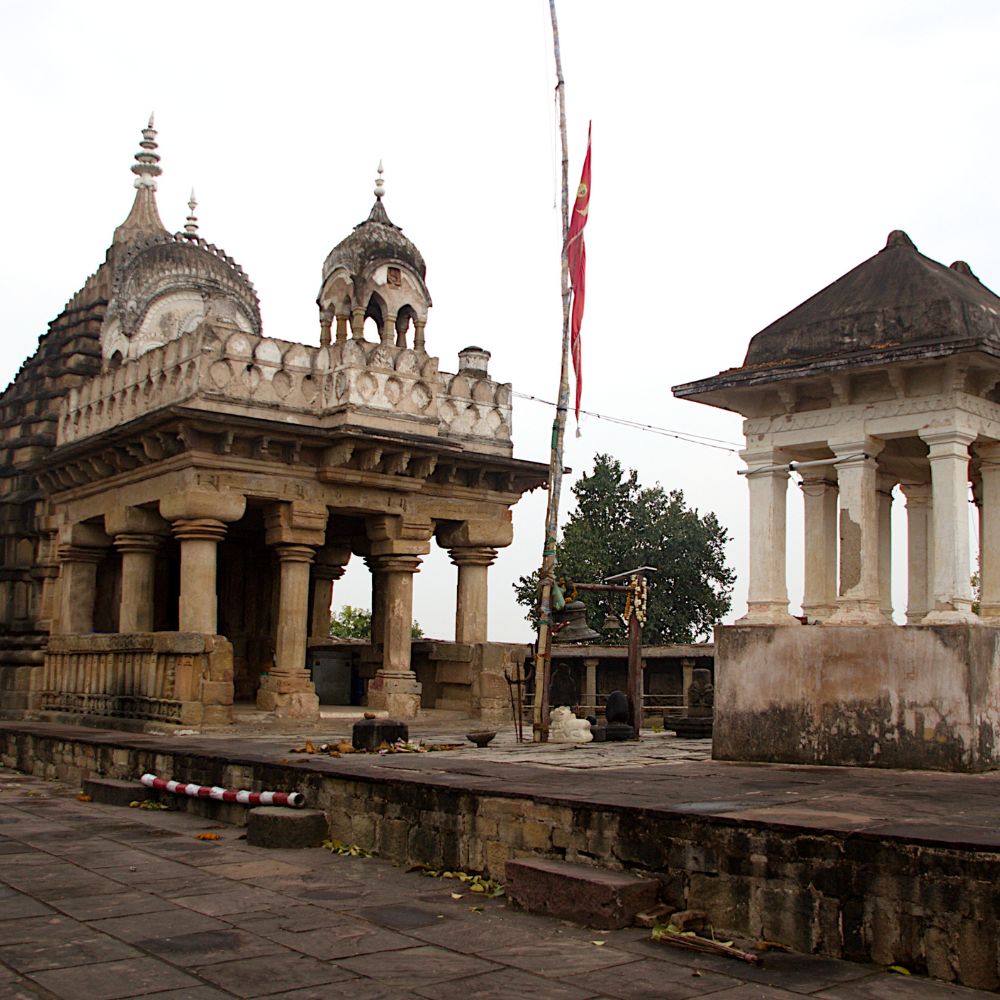
Historical and Cultural Significance
Jabalpur, located 164 kilometres from Kanha National Park, derives its name from the Arabic word "Jabal," meaning "mountain," and the Sanskrit word "Pura," meaning "city." Legend has it that the city is named after the sage Jabali, making it a tapasya bhumi or a land of meditation. Situated along the picturesque banks of the River Narmada, Jabalpur is steeped in history and renowned for its breathtaking beauty.
Natural Splendor
Once primarily known as an industrial city, Jabalpur has emerged as a prominent tourist destination due to its stunning natural landscapes. Encircled by sandstone and granite hills, the city is globally acclaimed for its white marble rocks. The majestic marble mountains, illuminated by the moonlight, cast enchanting hues over the Narmada River, offering visitors a thrilling and enlightening experience.
Attractions
Jabalpur boasts several attractions, including the iconic Dhuandhar Falls, which cascade down from a height of 98 feet in Bhedaghat. Tourists can admire the marble rocks up close while enjoying a boat or cable car ride amidst the flowing waters and misty surroundings. Additionally, the area is home to ancient forts and museums that offer insights into the region's rich historical heritage.
Spiritual Attractions
Jabalpur boasts a plethora of spiritual attractions, including the Chausath Yogini Temple, which dates back a thousand years, and the Gwarighat Gurudwara situated on the river's edge. The Kanchnar Temple, featuring a 76-foot-tall statue of Lord Shiva, is another notable landmark. These sacred sites attract pilgrims and spiritual seekers from far and wide, adding to the city's cultural richness.
Bandhavgarh National Park:
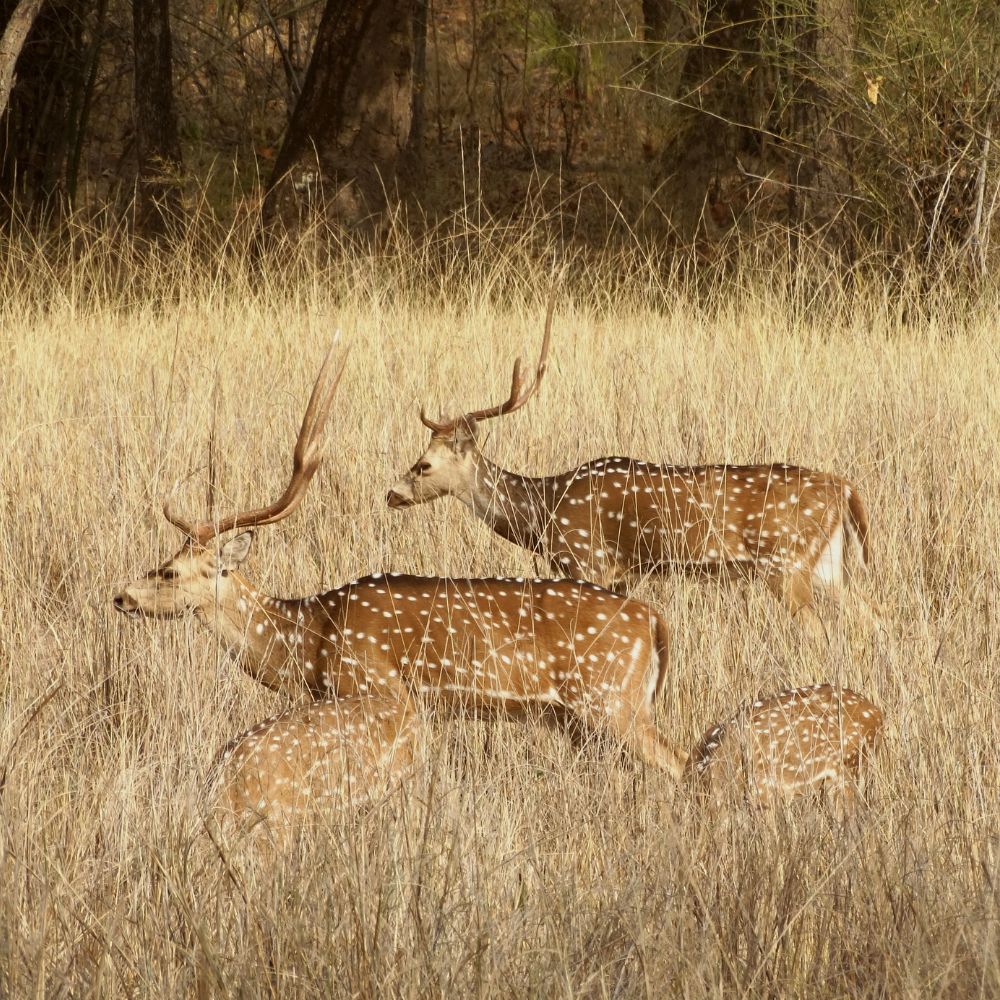
Geographical Setting
Nestled in the Madhya Pradesh Vindhya highlands, Bandhavgarh National Park is situated in the Umaria district of Central India. Covering a primary area of 105 square kilometres and a buffer zone of approximately 400 square kilometres, the park boasts a diverse range of geographical features, including lofty mountains, rolling forested landscapes, and expansive meadows.
Home of the Royal Bengal Tigers
Bandhavgarh National Park is renowned for its population of Royal Bengal Tigers, boasting the highest known density of tigers in both India and the world. The park's twelve natural waterholes, numerous artificial streams, historical monuments, and ancient cave ruins dating back two thousand years add to its allure.
Historical Significance
Once the hunting preserve of the Maharaja of Rewa, Bandhavgarh is now a sanctuary for wildlife, including the revered White Tigers. The first White Tiger, discovered in Rewa, has become a symbol of conservation efforts worldwide. Bandhavgarh is believed to be the ancestral home of all tigers, adding to its historical and ecological significance.
Tiger Sightings and Biodiversity
Bandhavgarh National Park is a prime destination for tiger sightings, making it a must-visit for wildlife enthusiasts. From a population of 44 to 49 tigers in 2012, the park now shelters over 75 tigers, reflecting successful conservation efforts. In addition to tigers, the park is home to more than 250 species of birds and over 22 different kinds of animals, further enriching its biodiversity.
Orchha:

Historical and Geographical Significance
Nestled along the banks of the Betwa River in Madhya Pradesh, Orchha is a medieval town steeped in history and folklore. The name Orchha, derived from Sanskrit, translates to "a hidden place," a fitting description for this secluded gem. Founded by Rudra Pratap Singh in 1501 AD, Orchha served as the capital of the Bundelkhand kingdom, with subsequent rulers leaving their mark on its rich heritage.
Riverside Temples
Orchha is renowned for its beautiful riverside temples, such as the Chaturbhuj Temple and the Raja Ram Temple. These temples, set against the backdrop of the Betwa River, create a serene and picturesque setting.
Architectural Splendor
Orchha is renowned for its luxurious palaces, finely carved temples, and impressive collection of folklore. The city's classical architecture, adorned with intricate mural paintings and Chhatris (cenotaphs) honouring the Bundela emperors, showcases a blend of Mughal and Rajput styles.
Legacy of Royalty
Once the centre of illustrious royal dynasties for over 300 years, Orchha exudes regal grandeur and elegance. The Orchha Fort Complex, situated on an island in the Betwa, stands as a testament to the city's legacy. Comprising palaces, forts, and temples, including the Raj Mahal, Jahangir Mahal, and Sheesh Mahal, the complex is a treasure trove of hidden tunnels and opulent royal residences.
Ujjain:
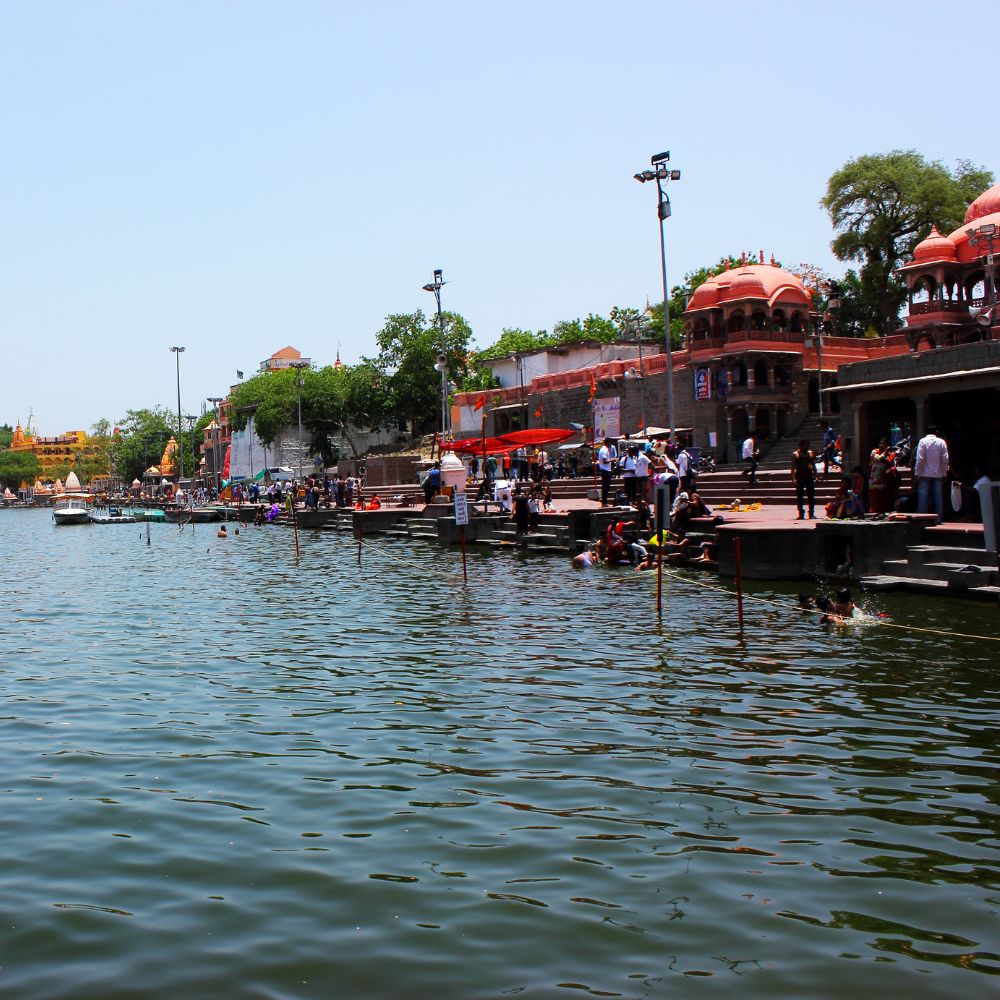
Spiritual Significance
Located on the eastern bank of the Kshipra River in Madhya Pradesh's Malwa region, Ujjain is revered as one of India's holiest places. The city holds immense religious significance, particularly for devotees of Lord Shiva, Lord Vishnu, and the Shakta tradition. Ujjain is one of the four locations where the Kumbh Mela, the world's largest religious gathering, is celebrated, drawing millions of pilgrims who seek spiritual purification by bathing in the sacred waters of the Kshipra River.
Temples and Sacred Sites
Ujjain is adorned with numerous Hindu and Jain temples, each steeped in history and tradition. The city's ancient architecture and sacred sites provide a glimpse into its rich past and cultural heritage. Among its most revered sites is the Mahakaleshwar Jyotirlinga, one of the twelve sacred shrines dedicated to Lord Shiva. Ujjain's religious allure extends beyond its temples, offering visitors a spiritual journey through time.
Tourist Destination
Today, Ujjain continues to attract visitors from around the world, drawn by its religious significance, architectural marvels, and historical legacy. The city's rich tapestry of religion, architecture, and education makes it a compelling destination for travellers seeking a deeper understanding of India's cultural heritage.
Pachmarhi:
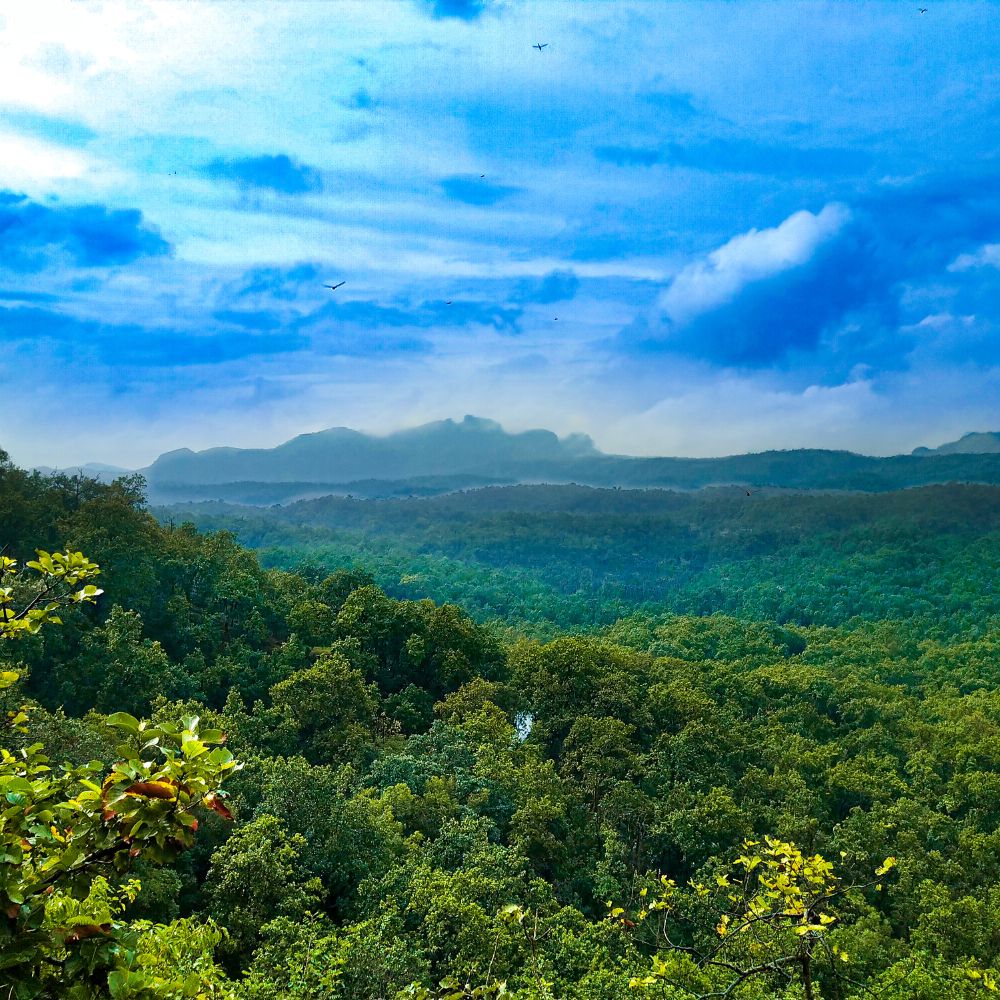
Queen of Satpura
Pachmarhi, often referred to as the "Queen of Satpura," is a picturesque hill station nestled in the Satpura Range. Its cool climate and lush landscapes make it a popular retreat.
Enchanting Waterfalls
The hill station is dotted with enchanting waterfalls such as Bee Falls and Apsara Vihar. These cascades, surrounded by verdant greenery, provide refreshing spots for visitors to unwind.
Colonial Architecture
Pachmarhi retains a colonial charm with its British-era bungalows and churches. The architecture adds a quaint and nostalgic touch to the hill station's serene ambience.
Conclusion
Central India, with its diverse tapestry of historical sites, natural wonders, and spiritual retreats, offers a journey through time and nature that is both enriching and exhilarating. From the architectural splendours of Khajuraho to the tranquil beauty of Pachmarhi, each destination in this region holds a unique story waiting to be discovered. Whether you are a history buff, nature lover, or spiritual seeker, Central India promises a captivating and unforgettable travel experience.
At BoutIndia, we offer exclusive tour packages for Central India, allowing you to explore these incredible destinations with ease and comfort. Our packages are designed to provide a seamless and unforgettable experience, with expert guides, luxurious accommodations, and hassle-free travel.
Plan your Central India adventure with Bout India today, and embark on a journey through the heart of India’s cultural and natural treasures.
